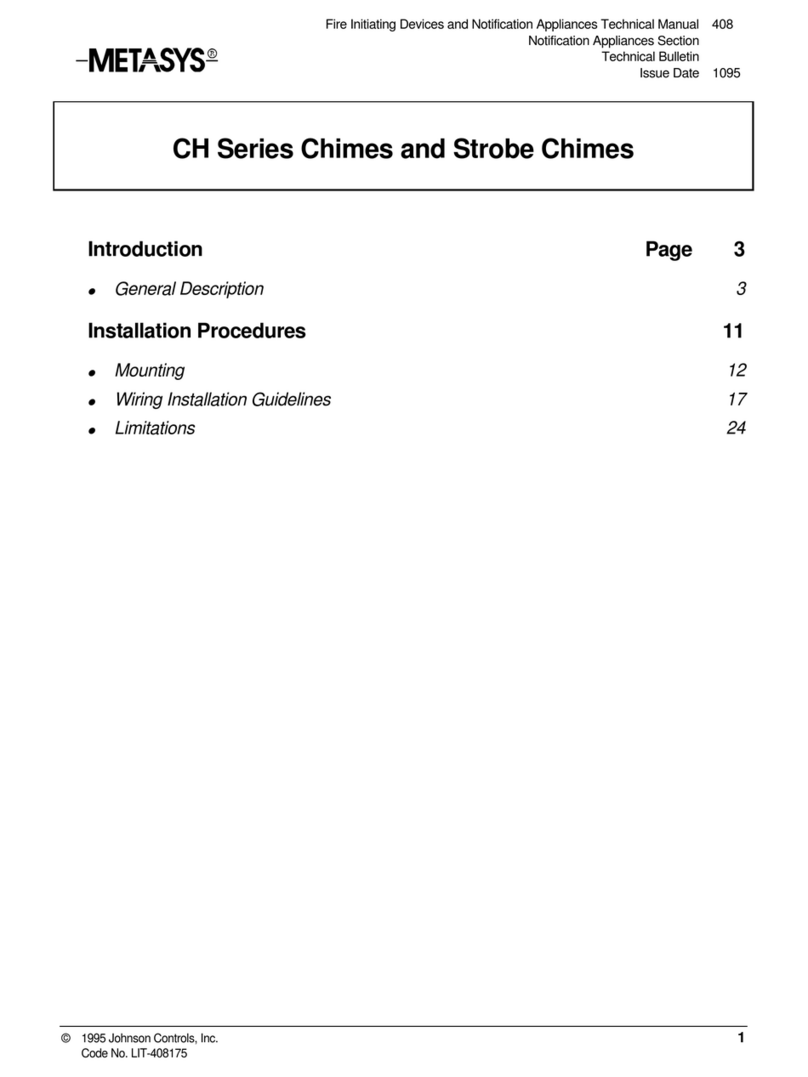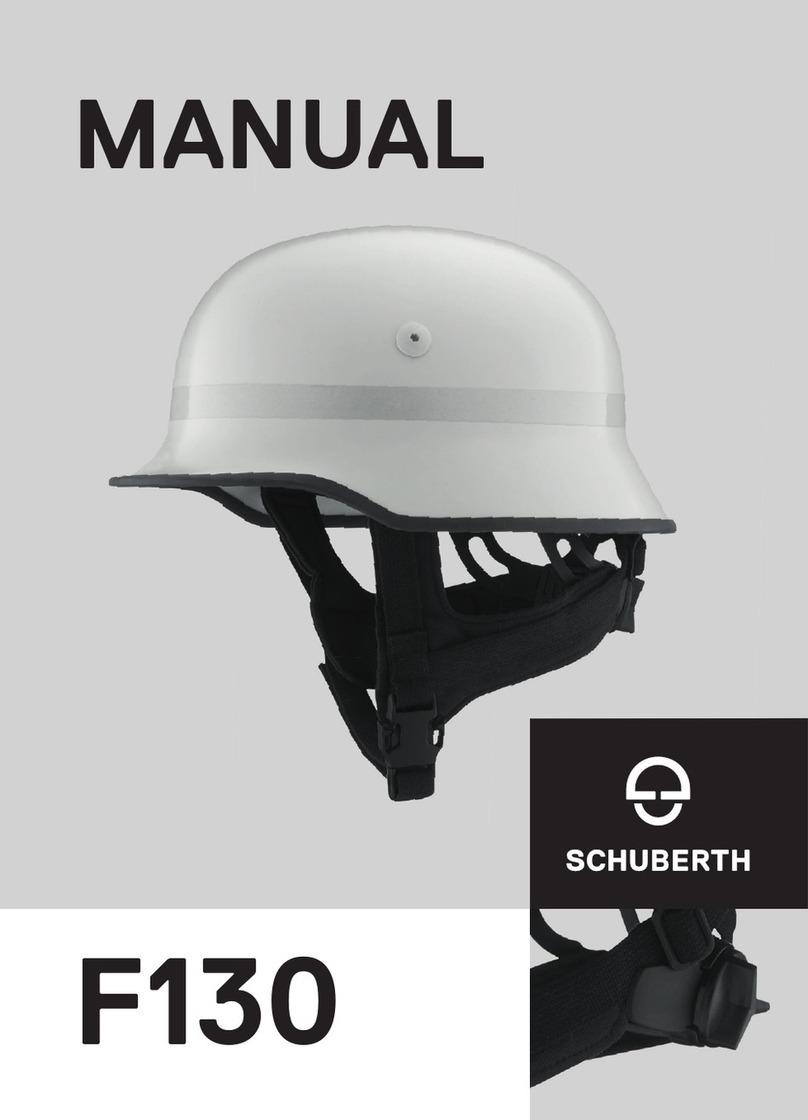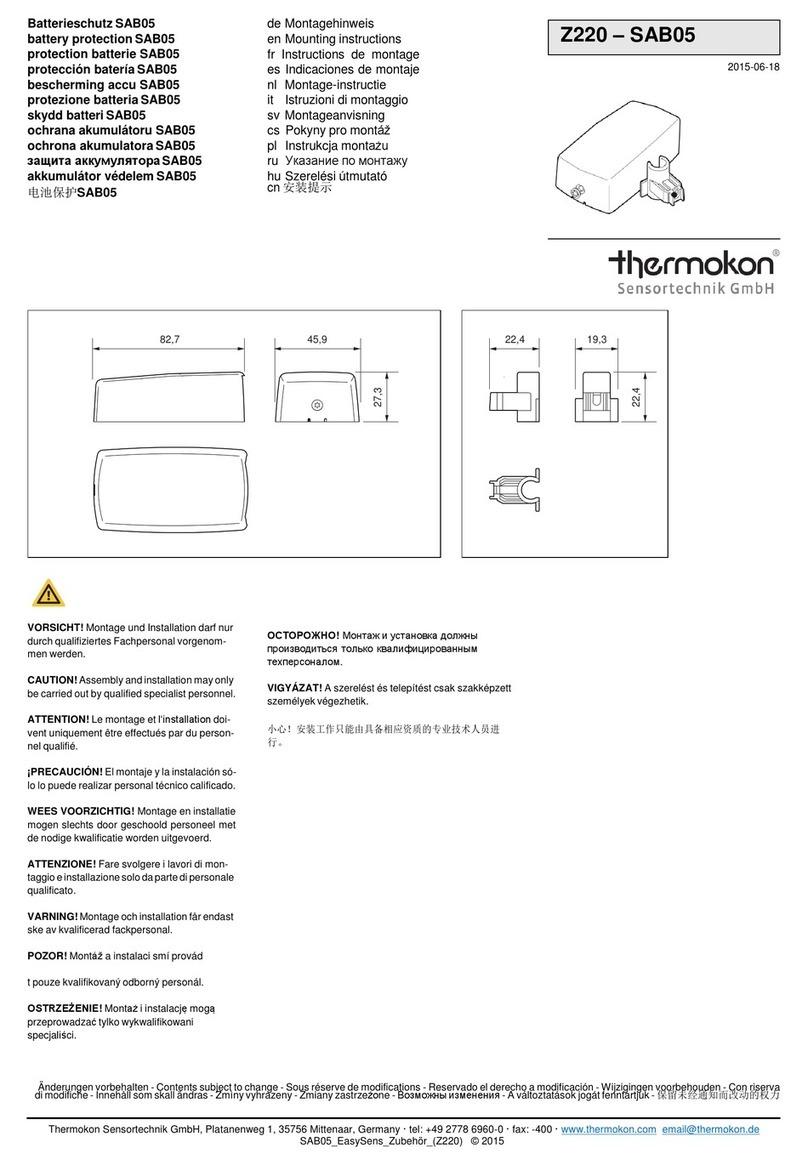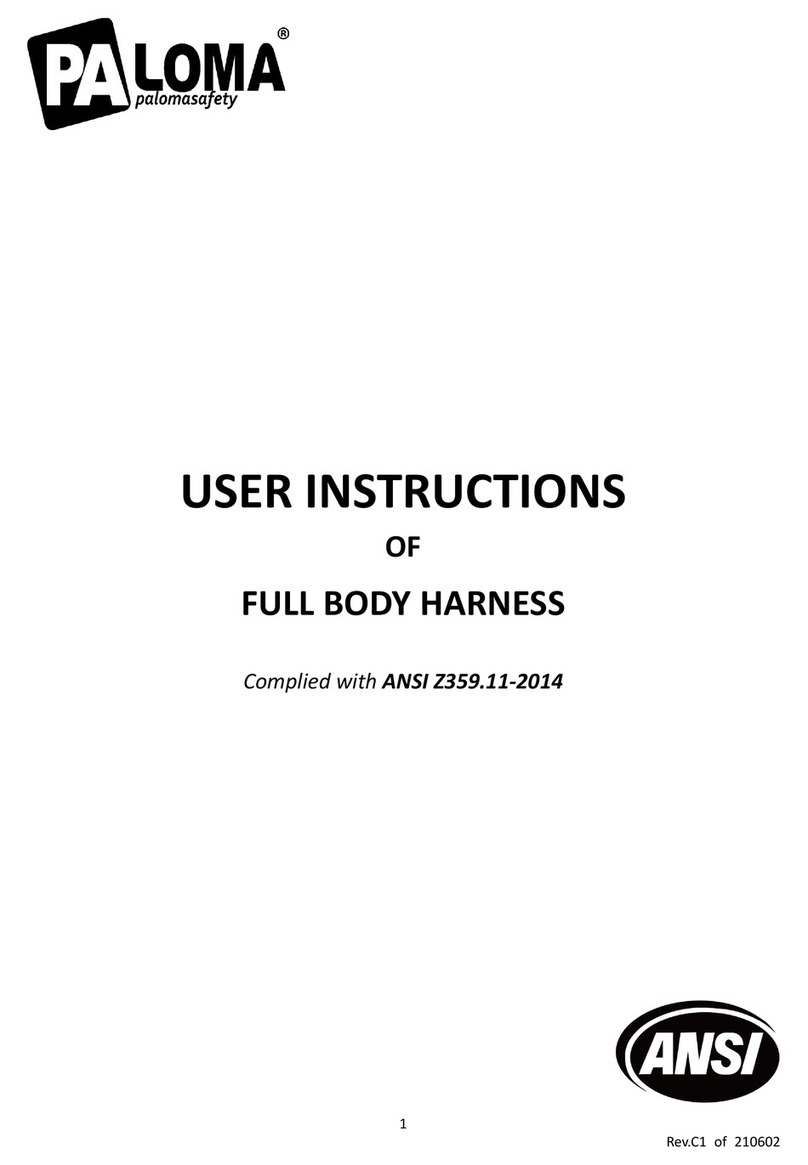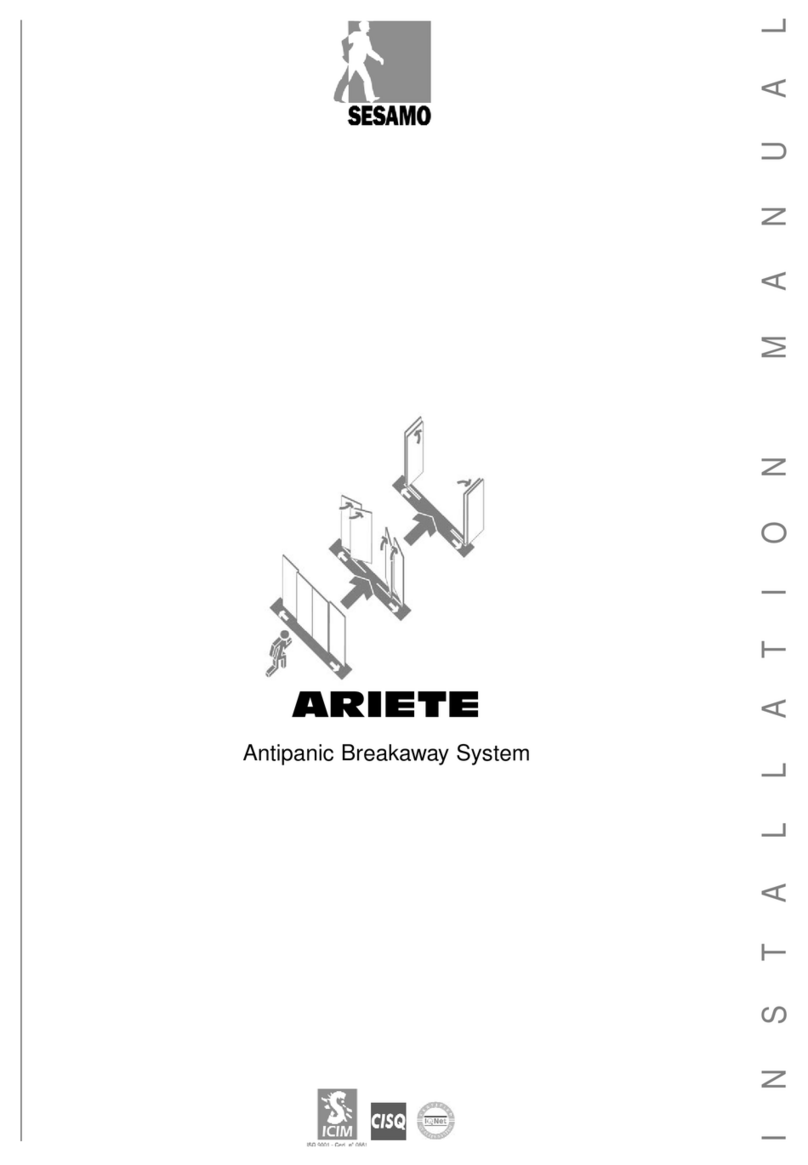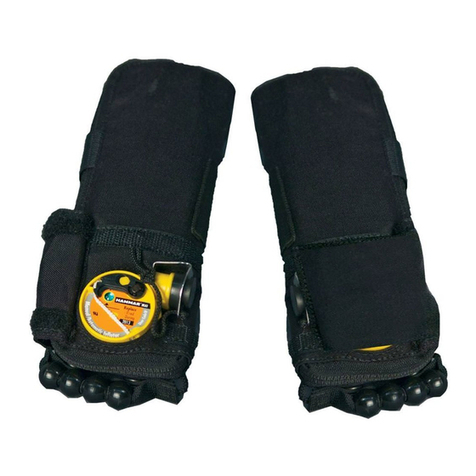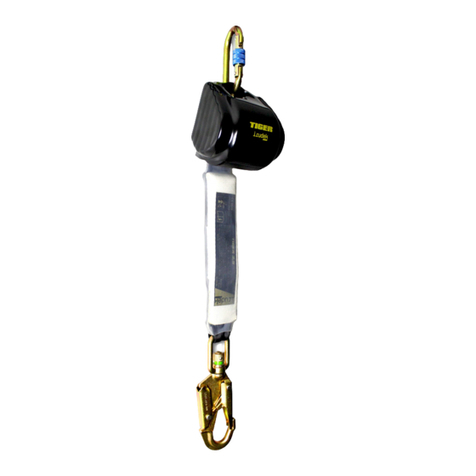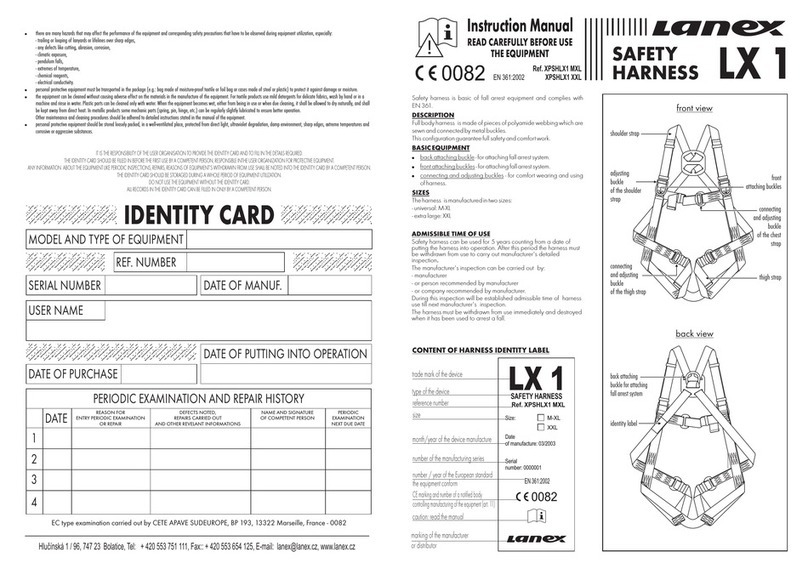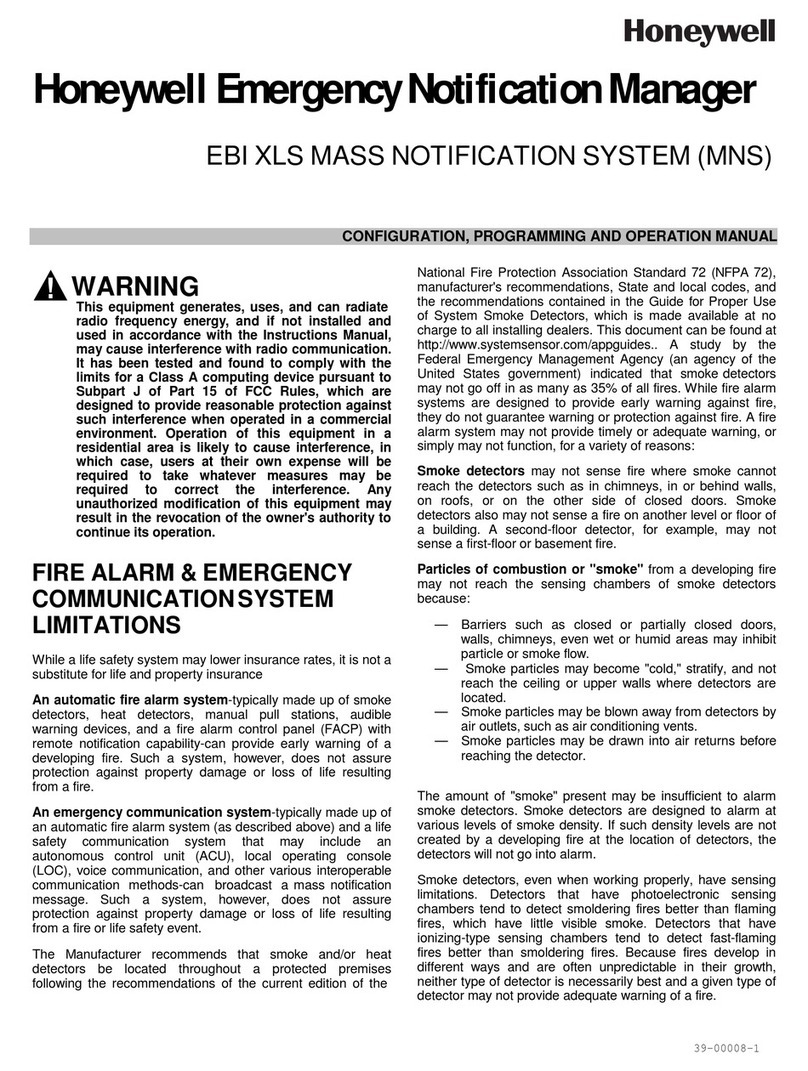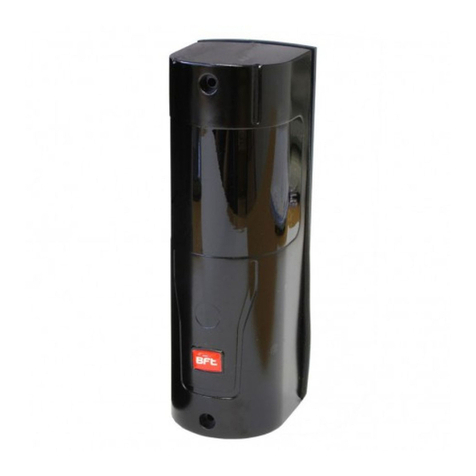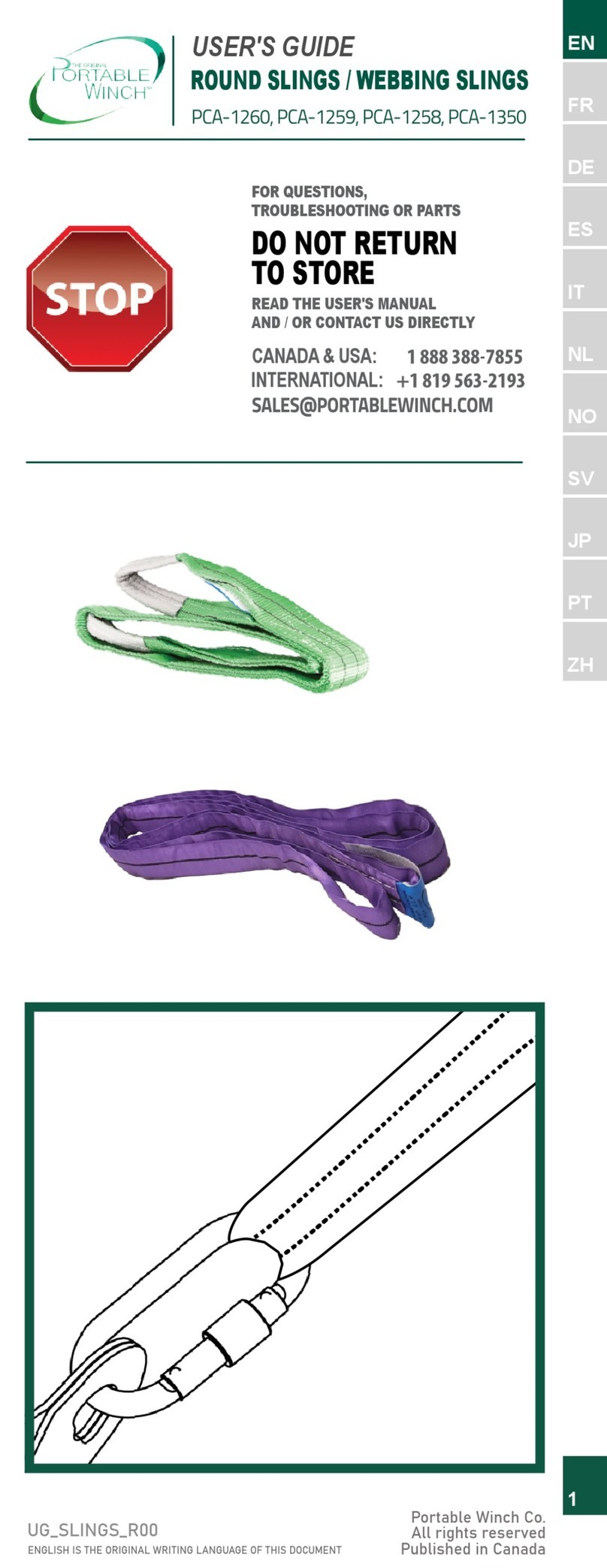Metasys B110LP User manual

Fire Initiating Devices and Notification Appliances Technical Manual 408
Conventional Products Section
Technical Bulletin
Issue Date 1095
© 1995 Johnson Controls, Inc. 1
Code No. LIT-408110
Introduction Page 3
●
General Description 4
Installation Procedures 5
●
General Information 5
●
Mounting 5
●
Wiring Installation Guidelines 7
●
Tamper-Proof Feature 10
●
Limitations 11
B110LP Plug-In Conventional Low Profile Detector Base

2 Conventional Products—B110LP Plug-In Conventional Low Profile Detector Base

Conventional Products—B110LP Plug-In Conventional Low Profile Detector Base 3
Introduction
This document contains important information about installing and
operating B110LP plug-in detector bases. These conventional detectors
are manufactured by System Sensor for use with Johnson Controls
systems. If you install this base for someone else to use, you must leave a
copy of this document with the user.
These instructions provide information regarding mounting, wiring, and
installation. Follow only those instructions that apply to the model you
are installing.
Before you install any B110LP plug-in detector bases, read and be familiar
with:
●the system’s control panel installation manual
●the requirements of the authority having jurisdiction
●National Fire Protection Association (NFPA) Standards 72-National
Fire Alarm Code
●System Sensor Guide for Proper Use of System Smoke Detectors
Technical Bulletin in the Fire Initiating Devices and Notification
Appliances Technical Manual (FAN 408) that provides detailed
information on detector spacing, placement, zoning, wiring, and
special applications
●or, for non-United States installations, applicable codes and standards
specific to the country and locality of installation
Failure to follow these directions may result in failure of this device to
report an alarm or trouble condition or respond properly to an alarm
condition. Johnson Controls is not responsible for devices that have been
improperly installed, tested, or maintained by others.

4 Conventional Products—B110LP Plug-In Conventional Low Profile Detector Base
The B110LP 2-wire base is equipped with screw terminals for the
connection of power, ground, and an optional remote annunciator.
Table 1: Detector Head Models and Accessories Used with the
B110LP Detector Base
Model Description
1151 Ionization detector head
2151 Photoelectronic detector head
RA400Z Remote annunciator for 2- or 4- wire systems, 3-32V.
Fits standard, single gang box.
XR2 Detector removal tool
XP4 Extension pole for XR2. Three 5 foot sections.
Table 2: Specifications Summary
Base Diameter 6.2 in. (157 mm)
Base Height
Front of Backbox to Front of Detector 0.95 in. (24 mm)
Weight 0.3 lb (136 g)
Mounting
4 in. Square Box with or without Plaster Ring
3-1/2 inch Octagon Box Minimum depth is 1.5 in.
Minimum depth is 1.5 in.
Operating Temperature Range 32 to 120°F (0 to 49°C)
Operating Humidity Range 10 to 93% Relative Humidity
Non-condensing
General
Description

Conventional Products—B110LP Plug-In Conventional Low Profile Detector Base 5
Installation Procedures
This section contains installation information for the B110LP plug-in
detector base. Instructions are given for mounting the base, and basic
installation information is provided.
!
CAUTION: Equipment hazard. Do not use in potentially
explosive atmospheres. Do not leave unused wires
exposed.
The detector base mounts directly to 3-1/2 inch (88.9 mm) and 4 inch
(101.6 mm) octagon boxes and 4 inch square boxes, with or without
plaster rings.
To mount the base:
1. Remove the decorative ring by rotating it in either direction to unhook
the snaps before separating the ring from the base.
2. Use the screws supplied with the junction box to attach the base to the
box through the appropriate slots in the base (Figure 1).
3. Position the decorative ring around the base and rotate it in either
direction until the ring snaps into place.
General
Information
Mounting

6 Conventional Products—B110LP Plug-In Conventional Low Profile Detector Base
Snap-on
Decorative Rin
g
Screws
(
Not Supplied
)
Detector Base
Box
(
Not Supplied
)
mntbase3
Shortin
g
Jumper
Figure 1: Mounting Detector to Box

Conventional Products—B110LP Plug-In Conventional Low Profile Detector Base 7
All wiring must be installed in compliance with the National Electrical
Code (NEC), all applicable local codes, and any special requirements of
the authority having jurisdiction, using the proper wire size. The
conductors used to connect smoke detectors to control panels and
accessory devices should be color-coded to reduce the likelihood of wiring
errors. Improper connections can prevent a system from responding
properly in the event of a fire.
For Initiating Device Circuit (IDC) wiring (the wiring between
interconnected detectors and the fire alarm control panel), it is
recommended that the wire be no smaller than No. 18 American Wire
Gauge (AWG) (1.0 square mm). Wire sizes up to No. 14 AWG
(2.1 square mm) for Terminals 8-14 and No. 12 AWG (3.3 square mm)
for Terminals 1-5 may be used with the base. For best system
performance, the IDC wires should be a twisted pair and installed in a
separate grounded conduit to protect the IDC from other types of circuits
in the system.
Smoke detectors and alarm system control panels have specifications for
the maximum allowable IDC resistance and supervision current. Consult
the control panel manufacturer’s specifications for the total IDC resistance
and supervisory current allowed.
The IDC zone wiring of the detector base should be checked before the
detector heads are installed in them. To make this possible, this base
contains a special spring-type shorting jumper. After a detector base is
properly wired and mounted on an electrical box, make sure that the
jumper spring is in contact with the base of Terminal 3. This temporary
connection shorts the negative-in and negative-out leads and permits the
wiring of the IDC to be checked for continuity.
Once all the detector bases have been wired and mounted and the IDC,
power, and optional releasing device control wiring has been checked, the
detector heads may be installed in the bases. The shorting spring in the
base will disengage when the detector head is turned into place.
Wiring
Installation
Guidelines

8 Conventional Products—B110LP Plug-In Conventional Low Profile Detector Base
Note: Terminals 2, 3, and 5 do not use looped wire under terminals.
Break wire run to provide system supervision of connections.
This Not This
wirguide
Figure 2: Electrical Connections
To make wire connections:
1. Strip insulation from the end of the wire.
2. Slide the bare end of the wire under the clamping plate.
3. Tighten the clamping plate screw.
4. Use the strip gauge molded into the base for ease of wiring
to terminals.
The smoke detectors and mounting bases are marked with a compatibility
identifier located as the last digit of a five digit code stamped on the back
of the product. Connect detectors/mounting bases only to compatible
control units as indicated in the Device Compatibility Technical Bulletin in
the Fire Management Accessories Manual (FAN 445).

Conventional Products—B110LP Plug-In Conventional Low Profile Detector Base 9
The IDC zone wiring of the detector base should be checked before the
detector heads are installed in them. To make this possible, this base
contains a special spring-type shorting jumper. After a detector base is
properly wired and mounted on an electrical box, make sure that the
jumper spring is in contact with the base of Terminal 3. This temporary
connection shorts the negative-in and negative-out leads and permits the
wiring of the IDC to be checked for continuity.
Once all the detector bases have been wired and mounted and the IDC
wiring has been checked, the detector heads may be installed in the bases.
The shorting spring in the base will disengage when the detector head is
turned into place.
Class A Optional Wirin
g
Remote
Annunciator
2base-a
3
2
1
4
5
2-wire
Control
Panel
Remote
Annunciator
3
2
1
4
5
E
O
L
Figure 3: Wiring Diagram for a Typical 2-Wire Detector System

10 Conventional Products—B110LP Plug-In Conventional Low Profile Detector Base
Note: Do not use the tamper-proof capability if the XR2 removal tool
will be used to remove detectors from the base.
This detector base can be made tamper-proof so that the detector cannot be
detached without the use of a tool.
To make the base tamper-proof before installing the detector:
1. Break off the smaller tab at the scribed line on the tamper-proof tab on
the detector mounting bracket (Figure 4).
tmprprf
Plastic Lever
Break tab at
dotted line by
twisting toward
center of base.
Figure 4: Enabling the Tamper-Proof Feature
To remove the detector from the base after it has been made tamper-proof:
1. Remove the decorative ring by rotating it in either direction and
pulling it away from the base.
2. Insert a small screwdriver into the notch (Figure 5).
3. Press the plastic lever toward the mounting surface before rotating the
detector counterclockwise for removal.
remdetct
Use small-bladed
screwdriver to
push plastic lever
in direction of arrow.
Figure 5: Removing the Detector Head from the Base
The tamper-proof feature may be defeated by breaking and removing
the plastic lever from the base. However, this prevents using the
feature again.
Tamper-Proof
Feature

Conventional Products—B110LP Plug-In Conventional Low Profile Detector Base 11
This smoke detector used with this base is designed to activate and initiate
emergency action, but will do so only when used in conjunction with other
equipment. This detector is designed for installation in accordance with
National Fire Protection Association (NFPA) Standards 71 and 72.
●Smoke detectors cannot work without power. Alternating Current
(AC) or Direct Current (DC) powered smoke detectors will not work
if the power supply is cut off for any reason.
●Smoke detectors will not sense fires which start where smoke does
not reach the detectors. Smoke from fires in chimneys, in walls, on
roofs, or on the other side of closed doors may not reach the smoke
detector and alarm it.
●A detector may not detect a fire developing on another level of a
building. For this reason, detectors should be located on every level
of a building.
●Smoke detectors have sensing limitations. Ionization detectors offer a
broad range fire-sensing capability, but they are better at detecting
fast, flaming fires than slow, smoldering fires. Photoelectronic
detectors sense smoldering fires better than flaming fires. Because
fires develop in different ways, and are often unpredictable in their
growth, neither type of detector is always best, and a given detector
may not always provide warning of a fire. In general, detectors
cannot be expected to provide warnings for fires resulting from
inadequate fire protection practices, violent explosions, escaping gas,
improper storage of flammable liquids like cleaning solvents, other
safety hazards, or arson.
Smoke detectors compatible with this base are UL Listed to operate in
specific maximum air velocities. Air velocity, along with other
factors, may affect detector sensitivity. To find out the air velocities
of specific detectors, see the appropriate technical bulletin. For more
information, see the 1993 NFPA-72-National Fire Alarm Code,
Appendix B.
●Test your smoke detector system per NFPA 72-National Fire Alarm
Code or codes and standards specific to the country of installation, at
least semiannually. Clean and take care of your smoke detectors
regularly. Taking care of the fire detection system you have installed
will measurably reduce your product liability risks.
Limitations

12 Conventional Products—B110LP Plug-In Conventional Low Profile Detector Base
Notes
Controls Group FAN 408
507 E. Michigan Street Fire Initiating Devices and Notification Appliances Technical Manual
P.O. Box 423 Printed in U.S.A.
Milwaukee, WI 53201
Table of contents
Other Metasys Safety Equipment manuals

